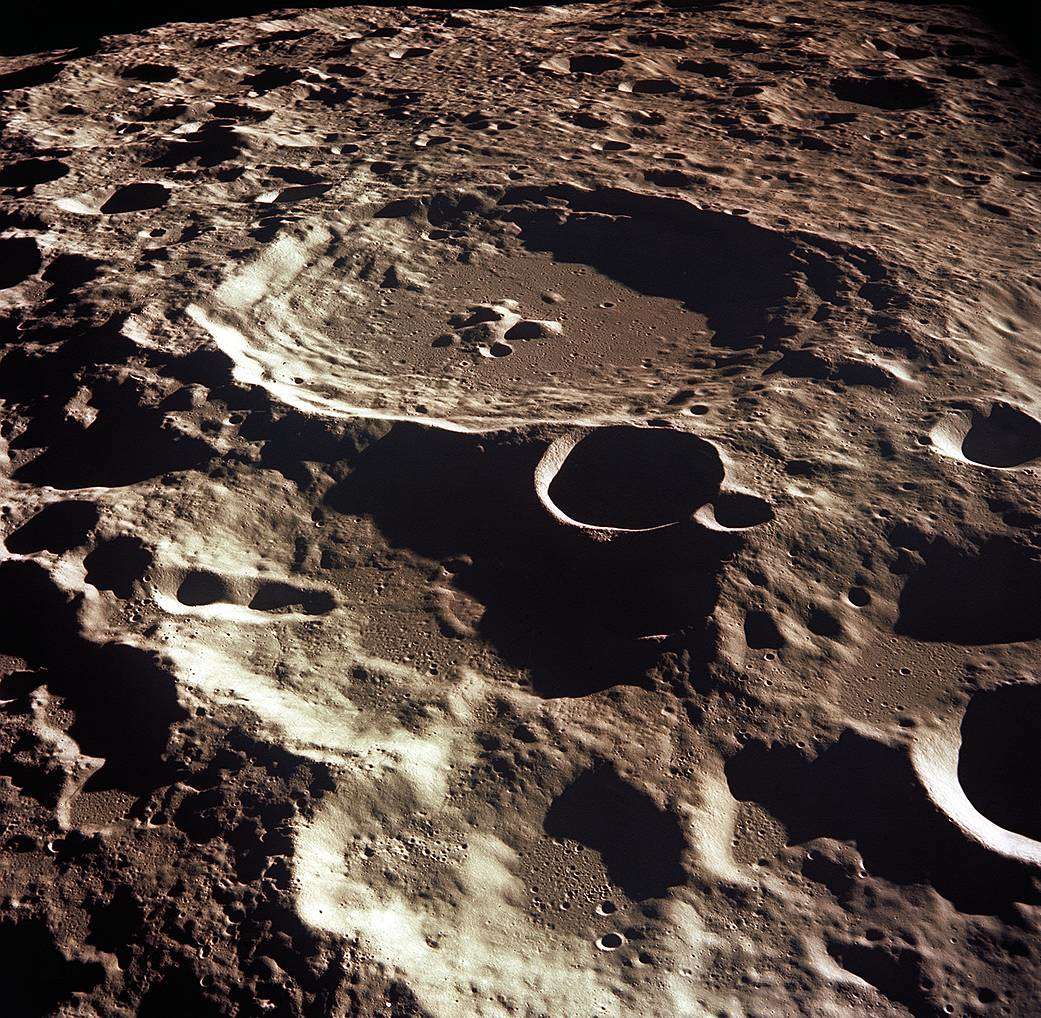Create a free profile to get unlimited access to exclusive videos, sweepstakes, and more!
ESA's lunar cave explorer will creep into the darkest depths of the Moon
It's a different dark side of the Moon.

Lunar lava tubes might be the ultimate habitat for astronauts. Radiation shielding, temperature control, and protection from incoming meteorites are already built in underground, but where exactly would humans hang out, and is it even safe in there?
ESA is determined to find out. This is why the space agency got an interdisciplinary team of scientists together to develop what could be the ultimate extraterrestrial cave explorer. Not all pits on the Moon are craters, and those that aren’t could lead to huge, unexplored tunnels formed from lava flows billions of years ago. Something that can go spelunking in there can tell astronauts how the outlook is. Such a mission could also bring other things to the surface.
Enter RoboCrane and Daedalus (named for the lunar crater pictured above). The spacecraft concepts, which had won the ESA Discovery SysNova Challenge, have now been merged by its Concurrent Design Facility into one potential mission that will (boldly, of course) go where no robot has gone before. As you can see in the ESA animation below, Daedalus, which looks like a futuristic orb, will be lowered by RoboCrane into gaping holes, or skylights, on the Moon to get a closeup of the entrance before taking a deep dive to the bottom. It sounds much easier than it actually will be whenever this mission takes off — possibly by 2033.
Planning the mission is a team of researchers including Loredana Bessone, project lead for ESA's CAVES and PANGEA programs and technical officer for the studies, and Francesco Sauro, cave scientist, planetary lava tube expert technical course director for ESA's CAVES and PANGEA programs.
"It is very important to study caves on Earth in order to understand genetic processes on other planets," Sauro told SYFY WIRE. "Lava tube and volcanic caves are of high interest because we know that the same processes could have happened in the volcanic regions of the Moon or Mars."
We can only see lunar and Martian caves from the outside. Until now, nothing has been developed to take the plunge. The only knowledge we have of what might be inside is from caves on Earth, but what scientists find out from exploring terrestrial caves may at least give them an idea of the inner dimensions and conditions, and whether they may even be habitable for alien microbes.
Humans may or may not be leaving boot prints on the Moon by then, but it would be dangerous for an astronaut to undertake this. There have already been too many caving horror stories on Earth. CAVES (Cooperative Adventure for Valuing and Exercising human behavior and performance Skills) and Pangea are programs that trains teams of astronauts to explore actual caves, some of the most alien places on this planet, and this kind of training will be even more critical for those who end up on the Moon. You can’t see or communicate that well in a lunar lava tube.
"Mines on Earth need elevators, but that requires a large infrastructure," Bessone said. "Descent to large holes in the ground with a portable, limited infrastructure on Earth is currently done by crane like equipment. Access to resources would be important."
Lunar caves are thought to be miles long with diameters up to thousands of feet. Sunlight is unable to make it inside, and communications with the surface will go dead without Robocrane’s innovative Charging Head (CH), which is basically an all-in-one wireless battery charger and communications lifeline that keeps robots connected so they can zap signals to one another. Robocrane will lower the CH to the skylight floor before sending Daedalus down. So what could be in there? Sauro predicts finding anything from new minerals, to water ice and other volatiles, to dust traps that are time capsules from when the Moon was younger and more temperamental.
"We know on Earth that caves can easily become 'archives of time' where information about external processes are stored and protected for geological times," said Bessone. "The same could have happened on a lunar caves, but the only way to know what is hidden inside is to go there."
Daedalus is a spherical bot that will explore lunar caves with its own LiDAR — a laser light version of radar — along with a subsystem that allows it to move through tricky areas, sensors to make sure everything is running smoothly, and a camera with stereo vision. It will autonomously come up with a 3D model of what is inside the lava tubes it investigates, so whether or not they could be potential habitats for astronauts, it could tell ESA about usable resources that might be inside. It could also identify geological features that tell more about the Moon’s past. Bessone is optimistic so long as Daedalus can communicate from the depths of a lunar pit.
"I believe maintaining a lifeline, with provision of resources through it are some of the most important challenges and this mission study," she said.
For this mission to survive, Daedalus needs to be able to dodge anything coming at it from the cave walls and not get lost in a dust avalanche. Exploring terrestrial caves has shown Sauro and his colleagues what risks it could face and how to steer clear of them. The mission also needs to be precisely time so it is aligned with illumination conditions that could make or break it.
"Any delay could put the whole mission at risk," Sauro said. "As Daedalus continues to go through phase after phase of prototypes, you can only wonder at what it might find in the labyrinths beneath the lunar surface."


























